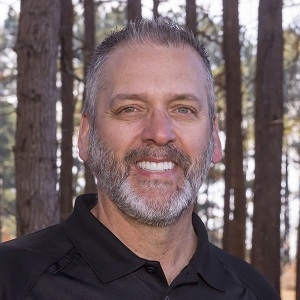Muddy Boots Basics

We are proud to introduce our new contributor, David Griffith, making his debut guest post this week with “Muddy Boots Basics.” Here is David, in his own words:
I have had a diverse career, starting with IBM, ROLM, and MCI and then moving to The Modern Group, Ltd., and Episcopal Community Services. These days, I serve on several boards, both for-profit and nonprofit. I do a bit of consulting and coaching working with my long-time colleagues at Delaware Valley Family Business Center. Jacqui tells me I am flunking retirement as she goes out the door to another meeting.
Like many colleagues, I have considered retirement for some time and concluded that doing nothing meant being dead. Interestingly, when I was an active CEO with “retired” board members, I was always fascinated by how they had their solid advice and wisdom on a given issue. Now I know, as I am one. It is called experience or, as I prefer, “scar tissue.”
Yes, technology, AI, work-from-home, and the internet have all changed the marketplace, but the fundamentals are the fundamentals. Talent, Customer focus, Listening, speaking last, Radar, Governance, Strategy, Gross and Net Profits, Cash flows, and Debt vs Equity are pretty much the same across the business landscape.
Experience shared is a tremendous gift, and accountability is a powerful tool for any leader. Yes, it is always darkest before it turns absolutely black, but the sun does come up. It is good to have people who know this around you when the lights go out.
I am reminded of a similar lesson from my nonprofit days at ECS. The best advice I ever got was from an experienced Rector who served on our board. Remember, he told me, “Preach the gospel, and sometimes use words,” meaning that actions matter way more than talk. I have seen the power of examples, the notion that offices eat last, that if the team does well, it’s the team; if not, it is yours. Listen with intent and value on-the-ground experience. Experience is invaluable and is a gift when it is shared thoughtfully.
So, retirement is a chance to give back, share lessons learned, learn some new tricks, and coach as you would have liked to have been coached. You have an opportunity for legacy with your community, organizations, and family and extended family. You can only fish so many days a year, though I am working on the correct answer. We all have something to share, help carry a load and leave a little less mess. Experience matters, but only if it is open to new ideas, approaches, and risks. The combination is powerful.
Sometimes, all it takes is to be there, listen, and share.
Muddy Boots Basics.
Last week I had the opportunity to speak to an assembled group of leaders of family businesses sponsored by the Delaware Valley Family Business Center. They asked me to share my perspective, aka scar tissue, on the attributes of leadership observed over my years in business and my service as a board chair with privately held for-profit organizations.
I shared five core attributes.
Muddy Boots.
Leaders who put on their Muddy Boots and go into the field and listen to the answers to two questions.
- How are we doing?
- What can we do better?
Leaders do not manage the business from behind a desk. The listen to customers, competitors, employees, thought leaders, educators, to the people closest to the work. They seek outside advice and perspective.
Time.
They are intentional with their time. “They do the important, not the urgent.” They carve outthink time. They are curious. They find the pain and fix it. They invest in learning and talking with contrarians. They think not in the present but three to five years out.
Elephants.
They create environments where it is safe to name the elephants. They focus on the hiring and the care and feeding of talent. They work to be the dumbest person in subject matter areas. They understand that a bunch of talented people are more valuable than one individual telling people what to do. The world needs inventors and implementers. They understand that inclusion is a seat at the table and that the bigger the table, the better the decisions.
Personal Brand.
People know what they stand for. They live their mission, their vision, and their values. People understand what their North Star is. They are consistent. They are both firm and calm. They run to the fire, not away from it. People want to work for them. They care more about other people’s success than their own. They put their crew first, and their crew knows it.
Balance.
They understand that while focus is important, so too is balance. They understand that shareholders are not the only stakeholder, but so too is family and community, employees, vendors, and customers. They understand and act that they are part of a much larger system and that we all carry the responsibility to pay it forward. They do not put greed ahead of grandchildren.
In the end, leadership can be summed up in the concept of legacy. True leadership understands that it is never about them. Rather it is about the organization they lead and the people they serve. They understand that old African proverb that “to go fast, go alone, but to go far, go together.” Leaders pull the rope; they don’t push it.
They understand that personal achievement and economic security is a function of stakeholder service. All of your stakeholders. Especially your future ones.
Did you enjoy this blog? Read more great blog posts here.
For our course lists, please click here.




